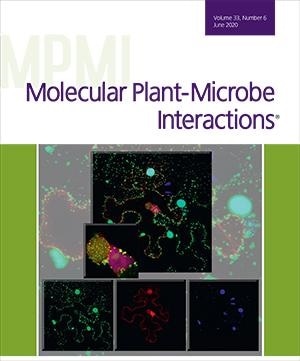Soybean, which is among the top four crops cultivated around the world, has been domesticated over 6000 years ago, and since then, it has been an innate part of Chinese agriculture for a long time.

Cover of the June issue of the MPMI journal. Image Credit: Thi Nguyet Minh Dao and Svetlana Y. Folimonova.
At the time of the domestication process, specific traits are chosen that make it easier to grow and cook plants, while other traits can be lost. In the case of domesticated crops, wild ancestors can be major reservoirs of agronomic traits that have been lost. When it comes to disease resistance, the loss of such traits is specifically crucial.
Now, a team of researchers in China started a study on wild soybeans to identify the genetic areas involved in the interaction with beneficial microorganisms that have been lost in the case of domesticated soybeans.
The team cultivated soybean lines that contained tiny DNA regions from their wild ancestors and eventually noted that certain soybean lines reacted differently to varying strains of the beneficial microbes called Sinorhizobium fredii.
The researchers found that these varied responses were associated with whether or not the bacterial strains contained fully functional type 3 secretion systems (T3SS). Microbes use the T3SS system to introduce protein effectors into plant cells. The researchers followed a dirigent protein, known as DRR1, and observed that it communicated genetically with the T3SS system present in the bacterial strains to modify the number of nodules formed by a root system.
This novel genetic method will help investigators access certain genetic diversity of soybean ancestors to enhance biological nitrogen fixation—a crucial part of sustainable agriculture—in contemporary soybean cultivars.
Source:
Journal reference:
Shi, Y., et al. (2020) RNA Sequencing-Associated Study Identifies GmDRR1 as Positively Regulating the Establishment of Symbiosis in Soybean. Molecular Plant-Microbe Interactions. doi.org/10.1094/MPMI-01-20-0017-R.